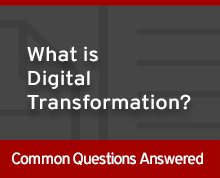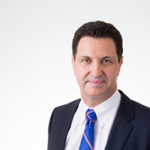What changes have to take place in order to motivate an IT group to get on board with the whole idea of digital transformation? According to Dale Danilewitz, it’s all part of a larger philosophy around getting IT to view everything they do through a business lens.
As executive vice president and CIO of AmerisourceBergen, the global pharmaceutical sourcing and distribution services firm, that’s precisely the direction he’s been taking for years.
“It always starts with educating the team on the whole philosophy around business outcomes and business services, customer needs and the supply chain. And that is an evolution, not a revolution, that continues daily, weekly, monthly, annually,” he says. “Sometimes we may talk too much about digital or technology – it’s almost a distraction.”
With an IT group some 2,000 strong, Danilewitz says the challenge is to ensure everyone understands the service mentality that he’s been trying to instill, as well as industry realities, company processes and customer needs. Do that, and “the innovation will come,” he says.
Fostering a culture of innovation, without toes
To accomplish that, the company takes steps including getting its IT people into the field, to the hospitals, pharmacies, insurance companies and retailers that are the company’s customers. “Walking in there and observing how people operate and how we help them operate more efficiently, that’s educational,” Danilewitz says.
A set of guiding principles and practices also helps, including the idea that everyone in IT, figuratively at least, has no toes – so they can’t be stepped on. “That means you can challenge anybody, whether your colleagues, management or me,” he says. “And I have no toes so I can’t be offended by it. I may not agree with you and will have reasons to justify my decision, but it empowers you.”
Another guiding principle is “continuous improvement in a blameless environment,” which empowers people to try new things without fear of reprisal if it doesn’t all go swimmingly.
“We emphasize and encourage a culture of taking educated risks. I always say, we will tolerate failure, but we won’t tolerate chronic failure,” Danilewitz says. The company holds up as examples people who tried and failed at some point but now have senior roles in the organization – people who learned from what went wrong.
Cross-pollination between IT and business
Another way to help keep that business focus is to continuously rotate business people into the IT organization, either directly from within the company or from outside. They take on critical roles within AmerisourceBergen’s service management-focused IT organization.
“They take ownership of whatever product or service we’re delivering, so they have to understand how to run, manage and operate it,” he says. “They own it and have to innovate and continue to drive value.” Having business people in those roles “helps us to prioritize and keep attention to the service rather than the technology behind it,” Danilewitz says.
It’s not just a one-way street, however: IT people also get recruited to join business groups within the company. “That’s when we know we’re doing a good job,” he says. “Because they’re adding value from a business perspective, not from an IT perspective.”
Value of the business perspective
When IT people are continuously exposed to this culture of always being mindful of the business perspective, it begins to color their thinking. For example, several years ago Danilewitz says one of his IT counterparts was in a hotel and got charged for a can of soda from the refrigerator in the room, even though he had put it back.
That simple act triggered a solution to a problem a pharmaceutical client was having. The client had an effective drug but was having trouble getting hospitals to buy it because of the cost. So AmerisourceBergen came up with the idea of a model similar to that hotel refrigerator. The company would make its drug accessible to hospitals in a format akin to that refrigerator, but without charging them for it. If someone took the drug out and didn’t replace it within a few hours – all tracked by RFID technology – only then were they charged for it.
 In that case, everybody wins, Danilewitz says – the patient gets a drug that can help him, the hospital can administer it in a timely fashion, and the manufacturer gets its drug to market.
In that case, everybody wins, Danilewitz says – the patient gets a drug that can help him, the hospital can administer it in a timely fashion, and the manufacturer gets its drug to market.
“To me, taking RFID technology from the hotel example and putting it in a complex healthcare setting was digital transformation. The thing is, it took somebody to recognize what problem they’re trying to solve to drive that transformation,” he says. “I believe if you start off with a culture of empowerment and people taking risks, then you can introduce agile methods and new technologies, and people will embrace them because we’re demonstrating to them we’re willing to give them the tools and techniques to help them be successful.”







